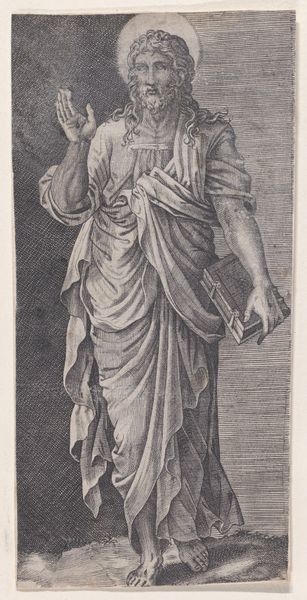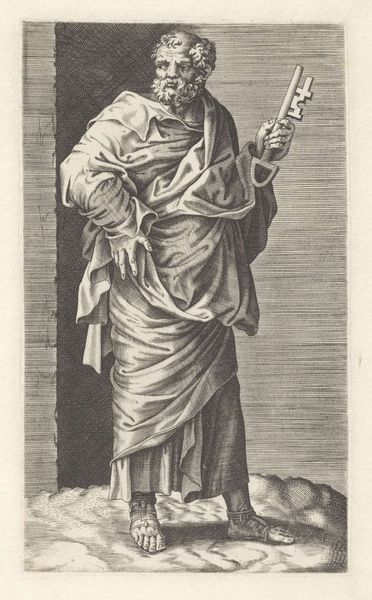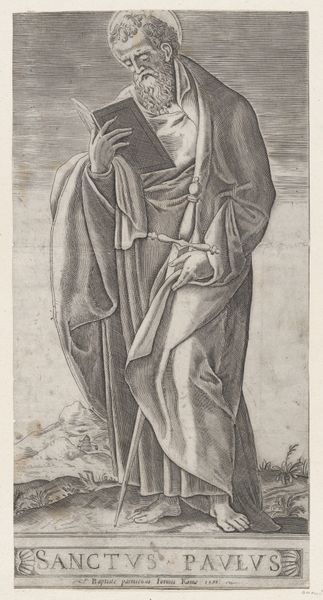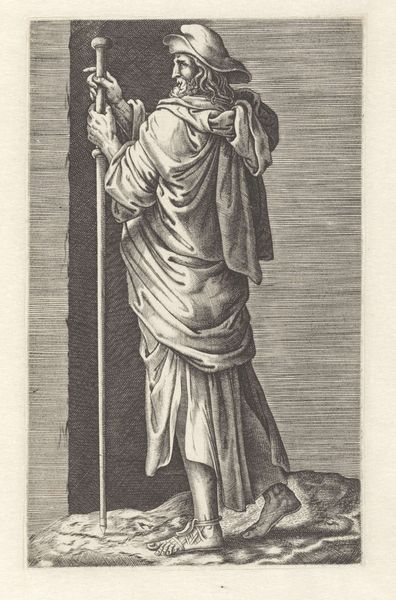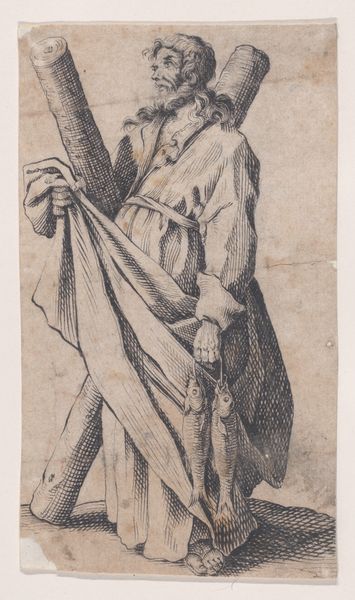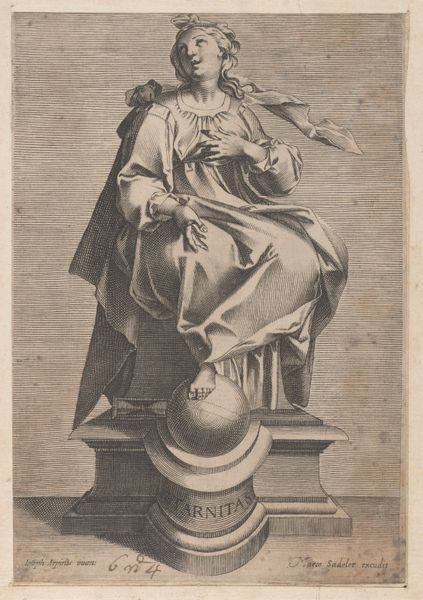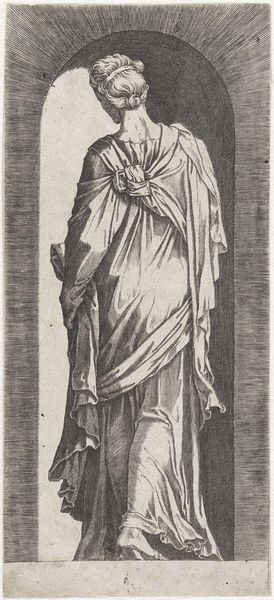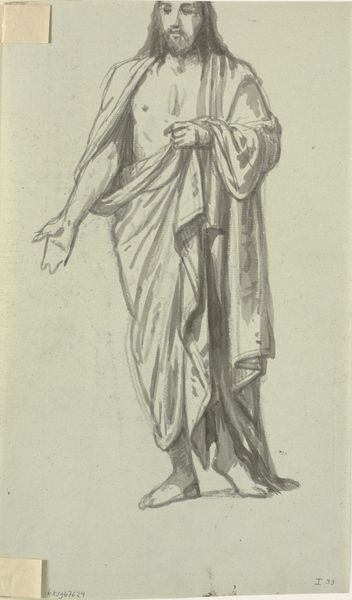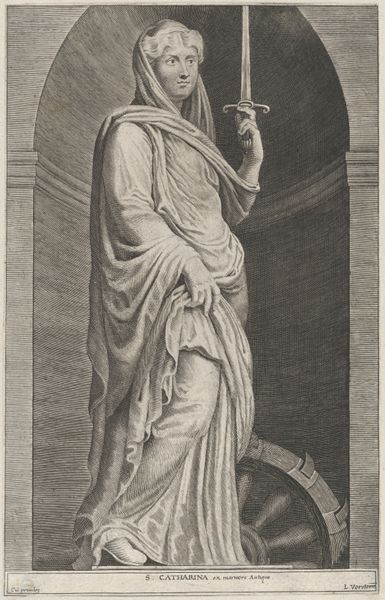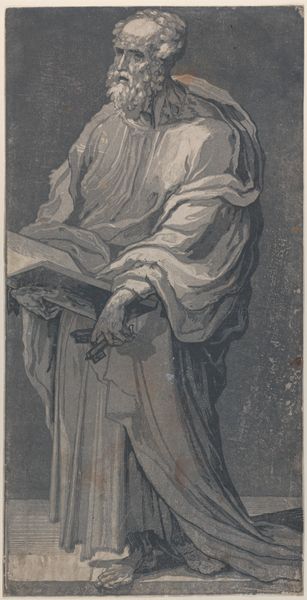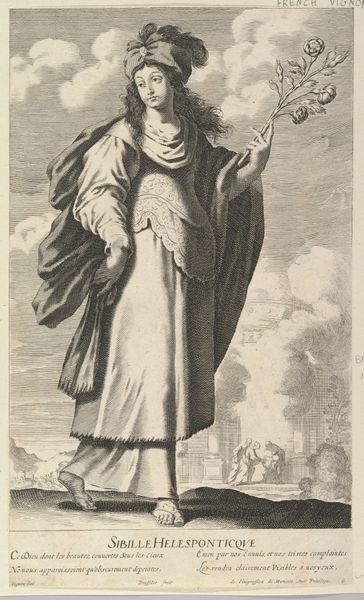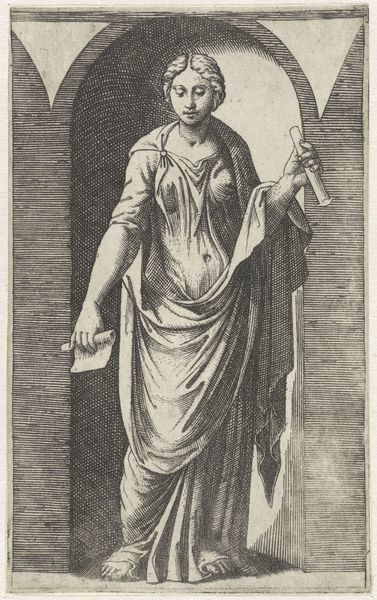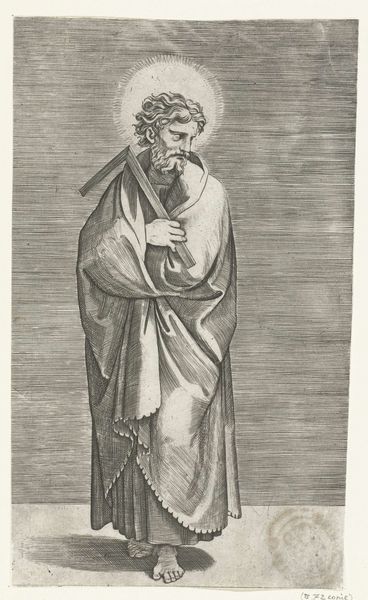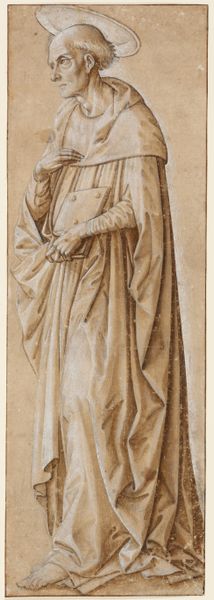
drawing, print, engraving
#
portrait
#
drawing
# print
#
mannerism
#
figuration
#
portrait reference
#
men
#
portrait drawing
#
history-painting
#
engraving
Copyright: Public Domain
Curator: This is "St. Simon, from Christ and the Apostles," an engraving made by Lambert Suavius sometime between 1530 and 1576. It's currently held at the Metropolitan Museum of Art. Editor: What strikes me immediately is the intensity of the figure’s gaze and the rather odd contrapposto pose. It creates a certain tension, a kind of restless energy in an otherwise still image. Curator: Indeed. Note the virtuosity of the engraving technique, particularly in the drapery. The lines are used masterfully to suggest volume and texture. And if you look closely, the modeling of the face reveals an artist deeply invested in humanistic principles. Editor: I’m wondering about the choice to portray Saint Simon specifically. What did he represent to Suavius or to the audience of his time? The apostle with the saw suggests themes of martyrdom, resilience. How would a 16th-century audience have understood this image? Curator: Well, placing this image within its historical and religious context, we can understand it as part of the Counter-Reformation’s visual culture. Such images reinforced religious doctrine and offered exemplars of faith. But, if we just focus on the internal coherence, the distribution of light and dark, and the relationship between form and content... Editor: But to view it outside of its intention within its time is problematic, surely? Isn't it crucial to understand the context in which these engravings were created and circulated? The mannerist style suggests it could very well be linked to powerful patrons seeking validation or political messages of steadfast resolve in the face of religious and social change. Curator: Of course, the context matters but it's all there on the surface if you study it intensely. I suppose one could investigate the extent to which prints like this influenced popular piety or contributed to the evolving visual language of religious representation. But if you truly look with careful consideration you see this immediately without further need to interpret. Editor: Alright. Seeing this does highlight the vital role these engravings played in disseminating religious narratives. Curator: And I find it pleasing that this focus on visual analysis illuminates its internal elegance.
Comments
No comments
Be the first to comment and join the conversation on the ultimate creative platform.
